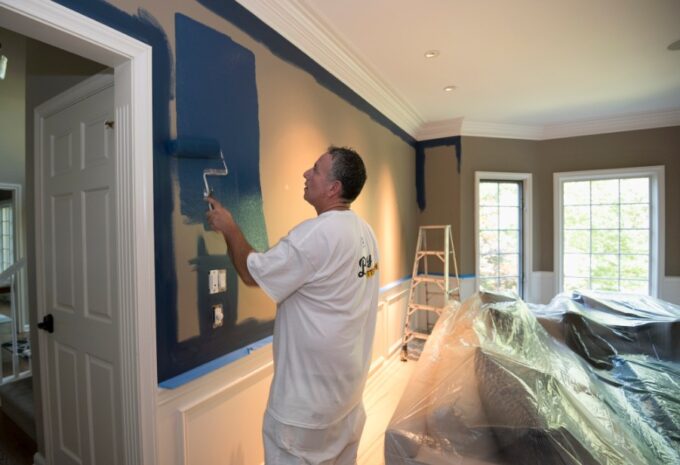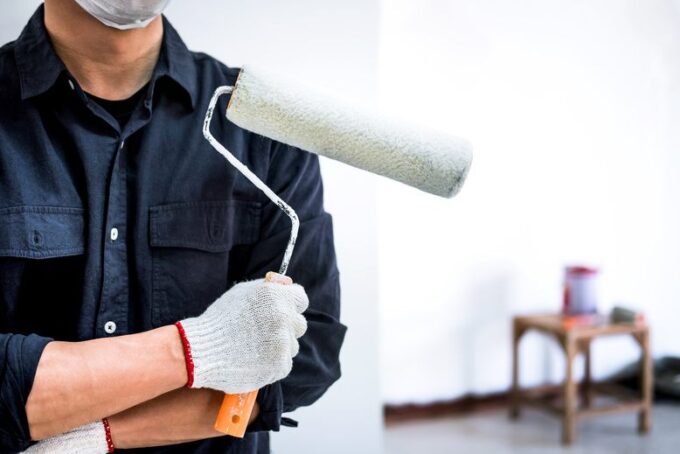Are you wondering why you should spend more for wall paint? You’re not alone! Interior painting can be confusing, but with this article you’ll learn the difference between cheap and expensive wall paint and why it matters. Get ready to discover what makes a quality wall paint so special!
Benefits of Interior Painting

Source: paintzen.com
Interior painting can be an attractive and cost-effective way to refresh the look of a room or home. In addition to providing aesthetic benefits, there are several practical advantages to interior painting as well. Appropriately applied paint makes wood surfaces more durable and less prone to decay. It also helps protect against staining from food, beverages, and smoke.
The quality of the one used for interior painting can have a significant impact on its performance and longevity. In general, most paints fall into two categories—cheap paints and more expensive paints.
- Cheap wall paints are usually water-based that provide some coverage but may suffer from inadequate adhesion or inhibition of mildew growth in humid climates. Although these paints may be initially cheaper than more expensive options, they could eventually require additional coats or result in frequent re-coating due to their inferior components and lack of coverage quality.
- More expensive wall paints tend to offer a wide range of features such as increased durability, improved resistance to fading caused by UV radiation or exposure to varying temperatures, enhanced coverage for greater efficiency, improved mildew control for humidity regions, an array of aesthetically pleasing colours and finishes that last much longer than cheaper alternatives and greater resistance to cracking or peeling due the inclusion of high-quality binders that ensure adhesion between coats of paint during contractions or expansions caused by extreme heat or cold conditions over time.
The long-lasting performance from these types of high-quality interior paints is well worth the initial cost outlay when considering all associated factors such as extensive preparation work for best results, meticulous application techniques for optimum coverage level and efficient use or resources in order proceed quickly with minimal waste all play important roles in terms achieving desired outcomes when performing any painting project—both big and small!
The Difference between Cheap and Expensive Wall Paint

Source: tucson.com
When you are creating the perfect look for any room, the choice of wall paint can make a big difference. Many homeowners want to find quality paint that offers both durability and beauty at an affordable price. However, it is important to note that not all paint products are created equal and there are significant differences between inexpensive and more expensive forms of wall paint.
Cheap ones typically have a low-grade pigment ratio and lack certain components, such as mildew protection or anti-fading agents. The lower quality also leads to shorter life expectancy and sometimes results in fading or discoloration after just one coat. Moreover, cheaper paints may contain added fillers that don’t allow for a uniform consistency when painting, resulting in uneven coverage or lackluster colour accuracy.
On the other hand, investing in more expensive wall paints can provide long-term value beneath the crisp painted finish. Higher grade pigments like titanium dioxide provide better protection against the elements, greater resistance against fading indoors, improved coverage with fewer coats, plus superior colour accuracy and consistency when painting larger surfaces. The inclusion of extra mildew protection further improves longevity in damp environments and provides better stain resistance throughout its lifespan.
When making your choice be sure to consider all important factors including price point and material cost as this will ultimately determine your satisfaction with the finished product over time.
Professional vs DIY Painting

Source: majorpaintingco.com
When it comes to interior painting, there’s a world of difference between the professional-grade materials and supplies used by most contractors and those bought in average home improvement stores. The main difference is that many of the products and supplies used by pros are made out of higher-grade materials, such as durable pigments and sturdy primer soaps, which results in a much more professional result.
Professional contractors usually use high-quality paint that has been developed for its perceived aesthetic value, as well as qualities such as durability and cover-ability (the job of hiding imperfections). This makes all the difference when it comes to longevity, so investing in painter’s grade paint is usually worth it for larger jobs.
Professionals often rely on medium-to-high sheen paints for ceilings, trimming and exteriors due to their strong resistance to dirt buildup and peeling. Lower sheen ones are sometimes used for bathrooms or other areas where moisture can be found. Professional painting crews also have access to specialized equipment such as Caulk Guns or airless sprayers which make the job easier – plus they won’t make a mess your home like many DIY jobs tend to do.
While DIY painting may certainly provide temporary relief when you just need something changed right away – if you want your walls looking fresh longer then you would be better off hiring a professional painter who will ensure your home looks great with experienced precision and lasting colour!
Conclusion
The phrase, “you get what you pay for” is especially true when it comes to the quality of wall paint. While a cheap one may be more budget-friendly initially, quality wall paint has significant advantages that make it a worthwhile investment in the long-run.
Quality paints are typically more durable and will last significantly longer than cheap paints, meaning your walls will look better for longer and will require less maintenance over time. They also usually come with warranties that guarantee they won’t fade, flake or crack as easily as cheaper ones. Other benefits of investing in quality wall paint may include:
- Improved coverage
- An array of colours and finishes to choose from
- Enhanced finish sheen
- VOC (volatile organic compound) compliance
They are also often available in low- or no-VOC formulations making them the healthier choice for an environmentally conscious consumer.

